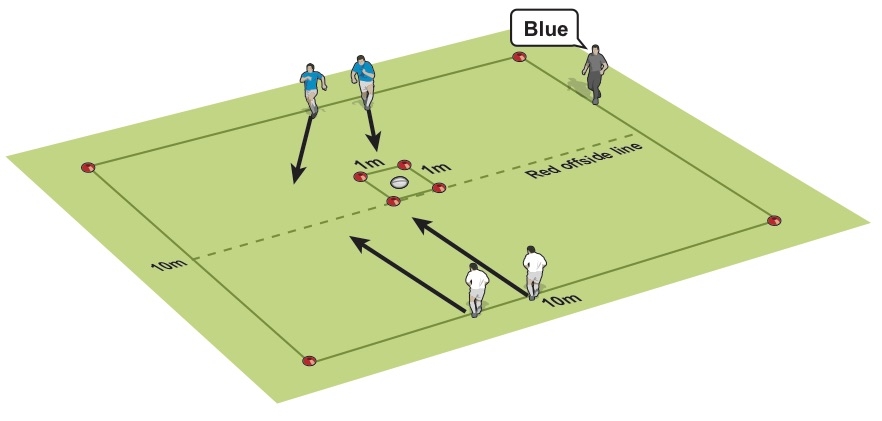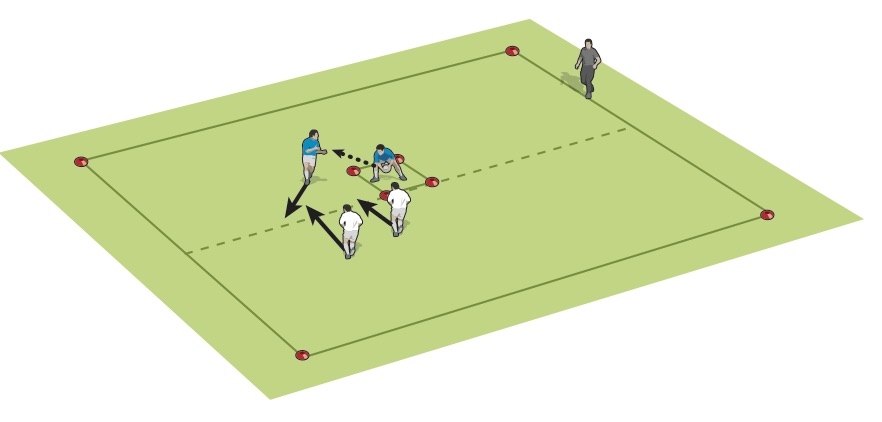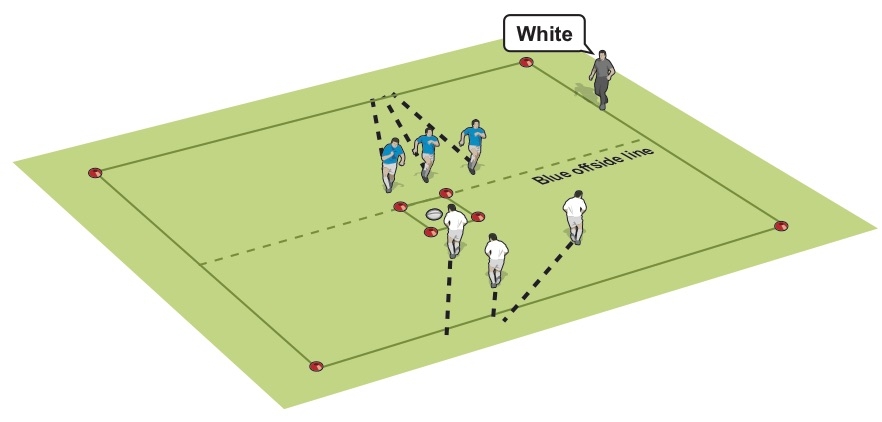You are viewing
1 of your 2 free articles
Your man, my man
Rucking & Maulingby Dan Cottrell
Use this simple defence activity to help defenders work in pairs, while giving one defender more responsibility than the other. By Dan Cottrell



This puts emphasis on taking responsibility for tackling. You can run this as a full tackling session or just “grab” tackling.
A 10m square containing a 1m square, one ball per group of four or six.

- One ‘blue’ attacker runs to the ball, the other takes up a position on one side of the 1m square
- The colour you call is the attack
- The ‘white’ defenders mark an attacker, but cannot initially go beyond the offside line

- The attacker crouches over the ball then either passes or goes himself. Stop and swap on a try, tackle or infringement
- Defenders can only tackle once the ball has been touched

- Develop by adding another player to each team
- The attack can choose to line up all on one side, or split
WHY USE IT
This puts emphasis on taking responsibility for tackling. You can run this as a full tackling session or just “grab” tackling.
SET UP
A 10m square containing a 1m square, one ball per group of four or six.
HOW TO DO IT
- Put a ball in the 1m square and two players at each end of the 10m square. The colour you call attacks and both sets of players come forward (see picture 1).
- One attacker goes to the ball and crouches over it. The other attacker goes to one side. One defender stands outside the box opposite the ball carrier, and the other marks the other attacker (see picture 2).
- The attacker over the ball can either pick and go himself OR pass to his team mate. Once he touches the ball, the game is live. Stop and swap if a tackle is completed or the attackers run backwards, out of the side of the box or score a try.
- Develop by adding another player to each group (see picture 3).
TECHNIQUE
- Call to say who you are marking.
- A low but balanced position in defence so you can come forward but still move from side to side.
Related Files
Vol-1-Issue-541-D-Cottrell-your-man-my-man.pdfPDF, 534 KB
Newsletter Sign Up
Coaches Testimonials

Gerald Kearney, Downtown Las Vegas Soccer Club

Paul Butler, Florida, USA

Rick Shields, Springboro, USA

Tony Green, Pierrefonds Titans, Quebec, Canada
Subscribe Today
Be a more effective, more successful rugby coach
In a recent survey 89% of subscribers said Rugby Coach Weekly makes them more confident, 91% said Rugby Coach Weekly makes them a more effective coach and 93% said Rugby Coach Weekly makes them more inspired.
Get Weekly Inspiration
All the latest techniques and approaches
Rugby Coach Weekly offers proven and easy to use rugby drills, coaching sessions, practice plans, small-sided games, warm-ups, training tips and advice.
We've been at the cutting edge of rugby coaching since we launched in 2005, creating resources for the grassroots youth coach, following best practice from around the world and insights from the professional game.













